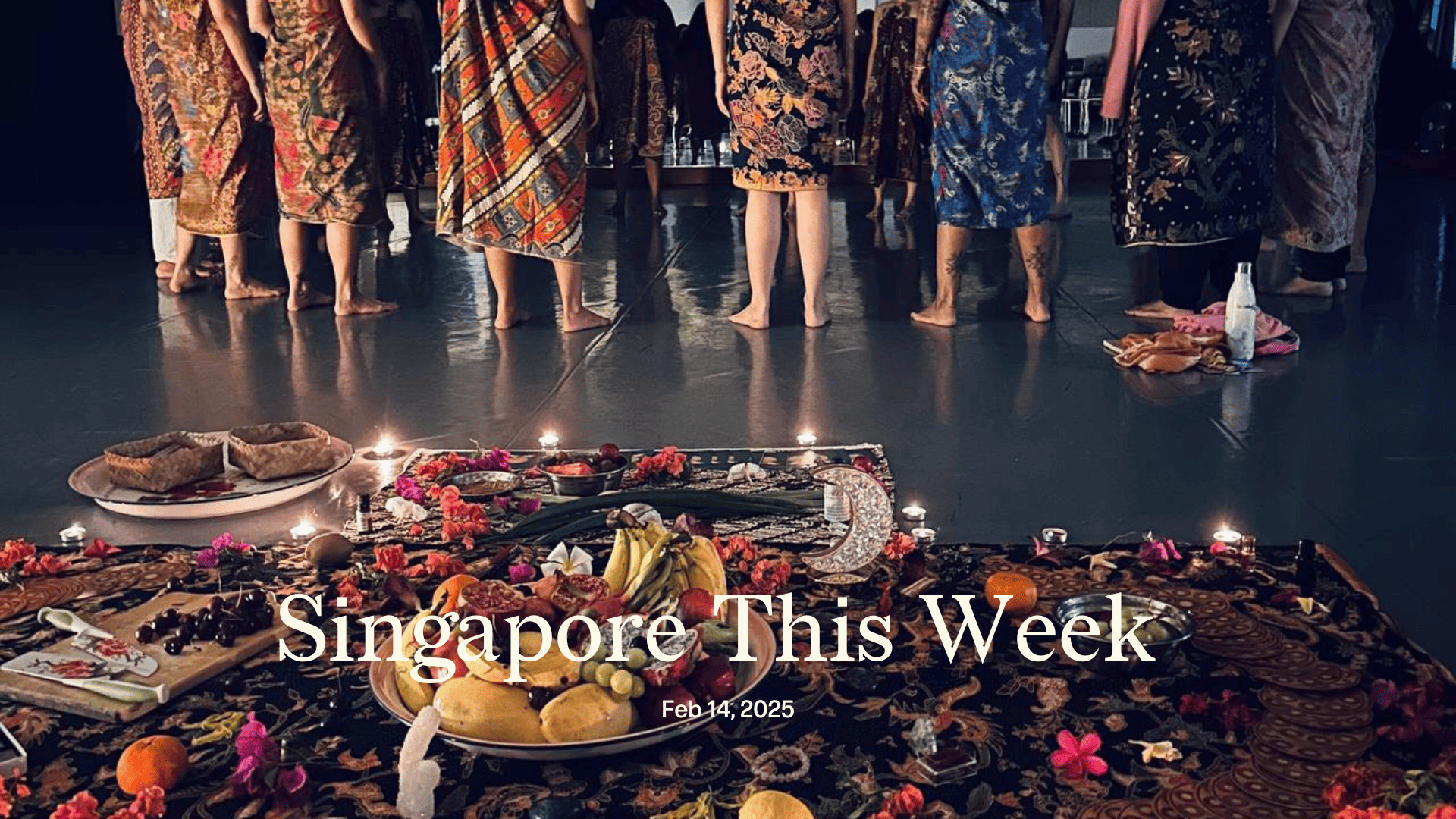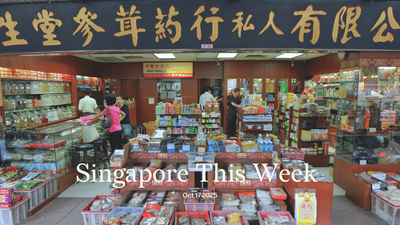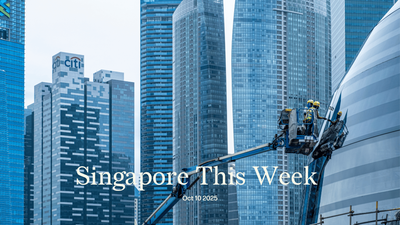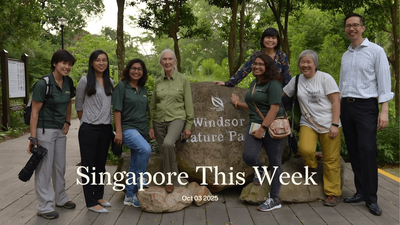Politics: Your honour, let the record show that he is racist
Is multiculturalism best promoted through a top-down ethnic classification system, such as Singapore’s CMIO (Chinese-Malays-Indians-Others), or one that is race-blind and allows people to self-identify? Should we force people of different ethnicities to live next to each other, or allow housing freedom while promoting more pluralistic mixing in the public space? What is the right level of immigration for Singapore’s society and economy? The ruling People’s Action Party (PAP) has never entertained much public debate on these issues, but instead has simply promoted its prevailing policies, which are invariably influenced by its socially autocratic and economically neo-liberal dogmas. That’s unfortunate. Such deep issues deserve constant introspection and interrogation in a democracy.
Even more unfortunate is that genuine discussion is sometimes shut down through the lazy use of the “racist” label. Last week, K Shanmugam, law and home affairs minister, repeatedly used the word on Leong Mun Wai, a non-constituency member of Parliament with the Progress Singapore Party (PSP), who had questioned the CMIO policy. Leong responded by pointing out that the party’s objection to Singapore’s ethnic integration policy—which mandates forced integration in public housing—has to do with the fact that it financially disadvantages ethnic minorities (as economists have shown). The PSP, in other words, was defending the rights of ethnic minorities. No matter. Shanmugam (the lawyer) persisted. “I note that Mister Leong doesn’t deny saying that 80 percent of Singaporeans who live in HDB flats are condemned and that his comments were racist. Thank you, sir.”
Shanmugam was correct in asserting that in 2021, Leong’s own party colleagues found the “racial undertones” of his messaging on the India-Singapore Comprehensive Economic Cooperation Agreement (CECA) troubling. Yet the reality is that, aside from some right-wing nativism (see next blurb), immigration criticism here is grounded less in racism than socio-economic anxieties. That they sometimes are expressed in problematic terms is the symptom of a society-wide immaturity in discourse—itself the product of the PAP’s hegemony.
Leong and Tan Cheng Bock, PSP chairman, quickly reiterated the party’s commitment to multiracialism. Even though The Straits Times (ST) last week spotlighted Shanmugam’s “racist” accusations against Leong, the paper this week, at the time of publishing, has yet to acknowledge Leong’s and Tan’s separate rebuttals. This simply perpetuates the one-sidedness of a contentious debate, as Redditors noted. As Singaporeans are well aware, the PAP has its own troubling racist words and policies to contend with. Ahead of a crucial general election (GE), the electorate should look out for attempts by the PAP to depict fair criticism of Singapore’s high immigration (the highest of any developed country over the past two decades) as racist; and any efforts to demonise Leong and his PSP team, which is likely to be one of its fiercest challengers at the next GE.
Society: Is terrorism inevitable?
Following a spate of actions against alleged radicals under the Internal Security Act, Shanmugam this week said that Singaporeans must be “psychologically prepared” for a terrorist attack. The Internal Security Department (ISD) announced that Saharuddin bin Saari, a 34-year-old Malaysian who was working as a cleaner here, was arrested and repatriated for, among other things, wanting to engage in armed violence in Syria and Gaza.
More puzzling was the case of Hamizah binte Hamzah, a 56-year-old Singaporean, who was issued a restriction order under ISA following her “radicalisation” after the attacks by Hamas against Israel on October 7th 2023, and the subsequent outbreak of Israel’s war on Gaza. The ISD said that although she herself had no intention of engaging in violence, she supported violence by Hamas and others in the Axis of Resistance against Israel and the Israel Defense Forces. Among other things, said the ISD: “She took pride in being the administrator of these [pro-AOR social media] groups, and saw it as her responsibility to ensure that pro-AOR and anti-Israel narratives were actively propagated in them.” Her restriction order will invite questions about the extent of support that Singaporeans are permitted to show for either side in this horrific, decades-long conflict.
Finally, the government issued a detention order to a rare “East Asian supremacist”. The ISD said that 18-year-old Nick Lee Xing Qiu was inspired by far-right extremists, and allegedly planned to attack Malays and Muslims in Singapore. Lee, among other things, repeatedly watched Brenton Tarrant’s live streamed 2019 terror attack in Christchurch, New Zealand; became convinced by the Great Replacement Theory, a far-right ideology about majoritarian decline that’s shared by white nationalists, Hindutva activists and others; and “believed that violent action had to be taken to prevent the Chinese majority in Singapore from being supplanted by what he perceived to be a rapidly growing Malay population.”
While Singapore must take decisive action against the threat of terror, one of the best ways for society to counter the threat is through more transparency. For instance, the government should be promoting open discourse on Singapore’s relationship with Israel. Similarly, society should be encouraged to interrogate Lee Kuan Yew’s own racist words and policies, some of which—including on East Asian supremacy and the worries about Singapore losing its Chinese supermajority—are similar to Nick Lee’s. It is the lack of open, honest dialogue in a supposed democracy that enables bigotry to fester, that makes disenfranchised youth more vulnerable to extremism.
Society: A healthy dose of paternalism
Tired of seeing anti-scam messages before you can access your banking app? Worried about the police’s new powers to freeze the bank accounts of presumed scam victims? The Protection from Scams Bill, passed last month, would have once been considered intrusive. But global support for such paternalism may be growing, given the irrepressible scourge of the scam industry. A startling new report (and podcast) by The Economist dissects an industry estimated to be worth over US$500bn (S$677bn) a year, on par with the illegal drugs trade. It afflicts perhaps one in 100 Americans, and is now the most common felony in Singapore. Its victims include those trafficked to work in scam factories, with almost a quarter of a million people in Cambodia and Myanmar alone, according to UN estimates.
These vulnerable people, often at threat of torture or even kidney removal, are trained in the fine art of 杀猪盘 (sha zhu pan), or pig butchering. “First the scammers build a sty, with fake social-media profiles,” said The Economist. “Then they pick the pig, by identifying a target; raise the pig, by spending weeks or months building trust; cut the pig, by tempting them to invest; and butcher the pig by squeezing ‘every last drop of juice’ from them, their family and friends.”
Many of the industry’s kingpins float around South-east Asia, and at least one has links to the infamous Fujian gang, arrested in Singapore’s biggest ever money laundering case. The Economist calls for governments to invest in education, collaborate with banks, crypto exchanges, internet-service providers, and others in the digital universe, and form cross-border partnerships. It lauded Singapore’s efforts, and invited Sun Xueling, minister of state in the Ministry of Home Affairs and the Ministry of Social and Family Development, to pen an editorial about them. That a pillar of Western liberalism has recognised policing in a state often dubbed autocratic perhaps both speaks to the nature of the beast—indiscriminate, insidious, blinding in its terror—as well as the increasing fungibility of positions across the classical liberal–illiberal spectrum.
Society: Perception and reality
It is a truth universally acknowledged that a government on the eve of elections must be in want of a flattering survey. Transparency International has obliged. The anti-graft watchdog’s 2024 Corruption Perception Index, just released, lists Singapore as the third-least corrupt country in the world, and the cleanest in Asia Pacific. Cue triumphant headlines. Yet, like much else in our gleaming metropolis, there are wheels within wheels. The rankings simply measure perceived corruption, without accounting for “private sector corruption, financial secrecy, or transnational corruption.”
That we’re one of the world’s most beloved laundromats, patronised by Fujian gangs and Angolan delinquents alike, is no secret. In Spiderweb Capitalism: How Global Elites Exploit Frontier Markets, Kimberly Kay Hoang described how the rich use offshore financial centres like Singapore as safe havens. “This is why we all call Singapore the laundromat of South-east Asia,” said Al, a Burmese, to Kay Hoang. Our financial sector’s esteemed clientele can rest assured that the local media, devoid of the means, agency and inclination for any investigative journalism worth the name, will leave them alone. The public is shut out too. There are 120 countries with freedom of information laws of varying efficacy. Singapore is not one of them.
But fret not. The state’s sentinels are ever vigilant, ready to pounce on the slightest infraction. Why, just over a year ago, the Monetary Authority of Singapore hit two banks with a combined fine of US$2.3m (S$3.1m)—less than one tenth of one-hundredth of their total profits—for failing to follow anti-money laundering protocols. Law firms, often the first ports of call for billionaire grifters looking to set up offshore companies and trusts, are inspected regularly—once every 24 years, according to the Transparency International report. “Behind a facade of prosperity,” it warned, “financial centres are providing a false sense of security from corruption” that, among other things, precipitates environmental destruction and exacerbates climate change far beyond their shores.
Anyone who has spent a significant amount of time dealing with the bureaucracy and venality in other parts of South and South-east Asia will know that the wheels of daily life move incredibly smoothly here. But that doesn’t mean that the grease shouldn’t be inspected. Singapore ranks troublingly high on at least one crony capitalism index while also courting foreign “crony wealth” through its flourishing family office sector and a slew of state-offered privileges. Sure, let’s celebrate low corruption in public life here but also think about the corruption we’re enabling elsewhere. Or do we save such nuance only for indices that show us in poor light?
Some further reading: In “Is Singapore being used to finance wars?”, we look at how arms traders from Russia, Myanmar, and North Korea use Singapore.
Earth: She sells carbon credits by the seashore
They’ve been referred to as the “rainforests by the sea”; vital as a natural climate solution and for sustaining healthy coastal ecosystems in many regions of the world. Unfortunately, like their tropical counterparts inland, they’re also one of the most threatened territories on Earth. In South-east Asia, where 32 percent of the world’s mangroves are located, a new study has found that 85 percent of investible mangroves are likely to experience some form of permanence risk over the next century, due to socio-economic and climate change factors. Land use conversion for production of oil palm, rice and aquaculture, as well as predicted cyclones and sea level rises pose the main barriers to conservation efforts. According to researchers, at the current carbon unit price, 63 percent of investible mangroves across the region could generate larger revenue from commodity production than carbon markets, thus limiting the long-term impact of blue carbon financing—through carbon credit offsets—as a viable tool for safeguarding these natural habitats.
Mangrove ecosystems (and coastal wetlands) play an important role in capturing, transforming and sequestering, or storing, carbon over time; at annual rates of about 10 times greater than mature tropical forests. When these habitats are damaged or destroyed, they lose their inherent ability to prevent or reduce the release of greenhouse gas emissions into the atmosphere. Between 2000 and 2016, South-east Asia accounted for 92 percent of worldwide mangrove loss from deforestation, led primarily by the conversion of land for commodities production. Raising carbon prices and ensuring alternative livelihoods for stakeholders are ways to mitigate socio-economic permanence risks, the study suggested. For instance, local communities can share the benefits of setting up and running carbon credit projects, receiving adequate and equitable compensation for forgoing income that might otherwise have been generated from agriculture and aquaculture.
In Singapore, reasons such as land reclamation, aquaculture production, industrial development and reservoir construction have resulted in mangrove habitats declining by more than 80 percent between 1958 and 2014. The government’s renewed appreciation for them has led to more concerted efforts to preserve these ecosystems. Its role in mitigating climate change will go a small way towards helping the country achieve net zero emissions by 2050. As an island nation, we’ll need every possible defence against rising sea levels. Plans to develop the Mandai Mangrove and Mudflat Nature Park—the island’s third largest—are also meant to further safeguard efforts to conserve these important carbon sinks and coastal buffers. But if we’ve learnt anything from the past, development remains the biggest threat to ecological conservation in land-scarce Singapore. Reaching an equilibrium will be the true test of our leaders’ resolve to build a City in Nature.
History weekly by Faris Joraimi
The online debate over whether or not to shower in the morning, dubbed “Mandilah Singapura” (Malay for “take a shower, Singapore”) has somewhat calmed to an unresolved détente. ST and CNA waded in recently, ruling in favour of the mandi camp citing proven benefits to physical hygiene (removing dead skin cells and excess oils) as well as civic duty. What kicked off the debate was an observation of the smellscape in a packed MRT carriage during morning rush hour, suggesting a recent symptom of growing density and congestion. But plus ça change, as they say. In the 19th century, bathing practices were also a source of contention and city-wide debate in Singapore.
Historian Jesse O’Neill wrote about how limited access to clean water and the necessity of upholding public hygiene and decency led municipal authorities to construct designated bathhouses—preferable to polluted waterways or water bodies used for drinking. So the logic went. These bathhouses needed walls to conceal bathers from sight, since many Asians were apparently quite unbothered being semi-nude as they washed in view of strangers. A lot of this had to do with racist, colonial ideas about cleanliness and acceptable standards of bodily exposure. I won’t add to the extensive discussion generated by Mandilah Singapura on supposedly distinct racial habits or cultural attitudes towards hygiene. What I think connects these two instances is precisely the modern concept of the public sphere, and what is permitted in it. While one classic definition imagines a realm of ideas and discussion—from which a modern form of democratic politics emerged—the public sphere is also defined by the senses: acceptable sounds, smells and sights.
One may say this is closer to Singaporeans’ idea of the public than the former; we’re so good at making police reports against noisy neighbours or art we disagree with, crying “public nuisance”. Likewise, the public interest of morning showers sends a clear message: keep your smells to yourself. The voluntary unwashed aside, though, not everyone can afford to suppress their body odour. Not everyone washes out of public duty, either. An eloquent essay for BERITA Mediacorp by senior Malay journalist Raman Daud detailed a range of “bathing” categories determined by Islamic tradition, not all of which achieve cleanliness in a secular, medical sense. I admit I’m not above these social definitions; I enjoy morning showers, and a part of me probably does it expecting others may return the favour.
Arts: Shiok sendiri
Beneath an almost-full moon, about a dozen feminine figures, barefoot and batik clad, are frolicking in a small field. Just a few metres away, the patrons of a bustling restaurant are gawking at this impromptu ritual. The coterie sway their bare arms in the breeze, shake out their hair, dig their toes into the dirt. A few minutes later, they file quietly back upstairs into a candlelit dance studio at the Goodman Arts Centre. Here, another dozen or so supine participants, chests heaving, are sprawled across the sprung floor. They’re all here for one reason: to rediscover the feminine erotic within themselves. Welcome to syrup. This newly-formed collective of multidisciplinary artists hosted their first public gathering on Sunday. Part chaste orgy, part coven initiation, the evening’s emotional trajectory felt like a metaphor for the journey of female sexual satiation: flirting, foreplay, climax, and lots of post-coital giggling. Through a series of movement exercises, women, femme-identifying and non-binary participants from all walks of life were invited to embrace their erotic histories, rediscover their buried desires, and nourish practices of sensuality. They shared what the erotic meant to them. They laid offerings—fleshy grapefruit, clitoral ginger flower, plump cherries—on an overflowing communal altar in the centre of the room. They sighed and moaned. They traced the contours of each other’s faces. Even the most resistant eventually found themselves sweat-slicked and face-flushed.
One of syrup’s conceptual cornerstones is Audre Lorde’s seminal essay, “The Uses of the Erotic: The Erotic as Power”. Many participants echoed the words of the American philosopher and intersectional feminist; as womxn, they’d often felt “vilified...contemptible and suspect” by virtue of their erotic desires, or that the erotic was “a sign of female inferiority”. But syrup was here to turn the erotic, as Lorde put it, into a powerful personal resource. Post-gathering, those who’d grown up in stifling religious environments shared a sense of emancipation. Another, displaced from their home country by civil war, said the gathering had restored a part of themselves and reconnected them with their ancestry. Yet another described the experience as the epitome of “shiok sendiri”, which in this case can be interpreted as giving yourself pleasure. The collective intends to continue these ad hoc gatherings and offerings. “I can buy myself flowers,” sang Miley Cyrus, “I can hold my own hand...I can love me better than you can.” syrup recognises that perhaps the best dirty valentine is the one we can give ourselves.
Tech: Artificial intelligence and real safety concerns
Election interference. Economic disruption. Misuse by bad faith actors. Unpredictable superintelligence. The myriad risks posed by the blindingly rapid development of artificial intelligence (AI) technologies have led to numerous international summits aimed at improving cooperation on governance and safety. This includes the AI Safety Summit held at Bletchley Park (November 2023) and the AI Seoul Summit (May 2024). The AI Action Summit (AIAS) in Paris is the latest addition to the series. Here, Josephine Teo, minister for digital development and information, announced The Global AI Assurance Pilot, led by the AI Verify Foundation and the Infocomm Media Development Authority (IMDA). The project will develop best practices for testing generative AI applications. It will also help grow third-party AI “assurance markets”: independent organisations meant to oversee all aspects of AI safety and ethics. Two reports, including one developed in collaboration with Japan, were also released. They evaluate AI safety across 10 languages, address gaps in non-English language safeguards, and assess how Large Language Models (LLMs) perform across multiple languages and cultures in Asia Pacific. It is encouraging to see Singapore reinforcing its role as a thought leader in AI governance, driving international standards and ensuring AI innovation remains inclusive and secure.
Tech: Amazon launches AWS Asia Pacific Hub in Singapore
Amazon marked its 15th year in Singapore with the opening of a swanky new office at IOI Central Boulevard. As the anchor tenant in the East Tower, Amazon’s 360,000 sq ft space can accommodate up to 3,000 employees, on top of the 2,500 already keeping the behemoth’s cloud, retail, corporate and operations engines running from its Asia Square digs. The new office will also serve as the Asia Pacific headquarters for Amazon Web Services (AWS). Not to be confused with its e-commerce arm, AWS provides businesses small and large with virtual computing power for everything ranging from simple data storage to complex AI solutions.
AWS’s additional S$12bn investment into cloud infrastructure from 2024 to 2028 aligns with the fast growing demand driven by rapid adoption of compute-intensive AI products. Some of its local clients include the Government Technology Agency (GovTech) and ride-hailing superapp Grab. Besides larger tech companies, Amazon has also been supporting small businesses and startups by partnering with the government on its Digital Enterprise Blueprint. With IMDA, it has also delivered technical workshops to hundreds of SMEs. This expansion further cements Singapore’s role at the center of Amazon’s strategy to support ASEAN-based enterprises and startups while holding the promise of more cushy big tech jobs for some Singaporeans.
If you enjoy Jom’s work, do get a paid subscription today to support independent journalism in Singapore.








